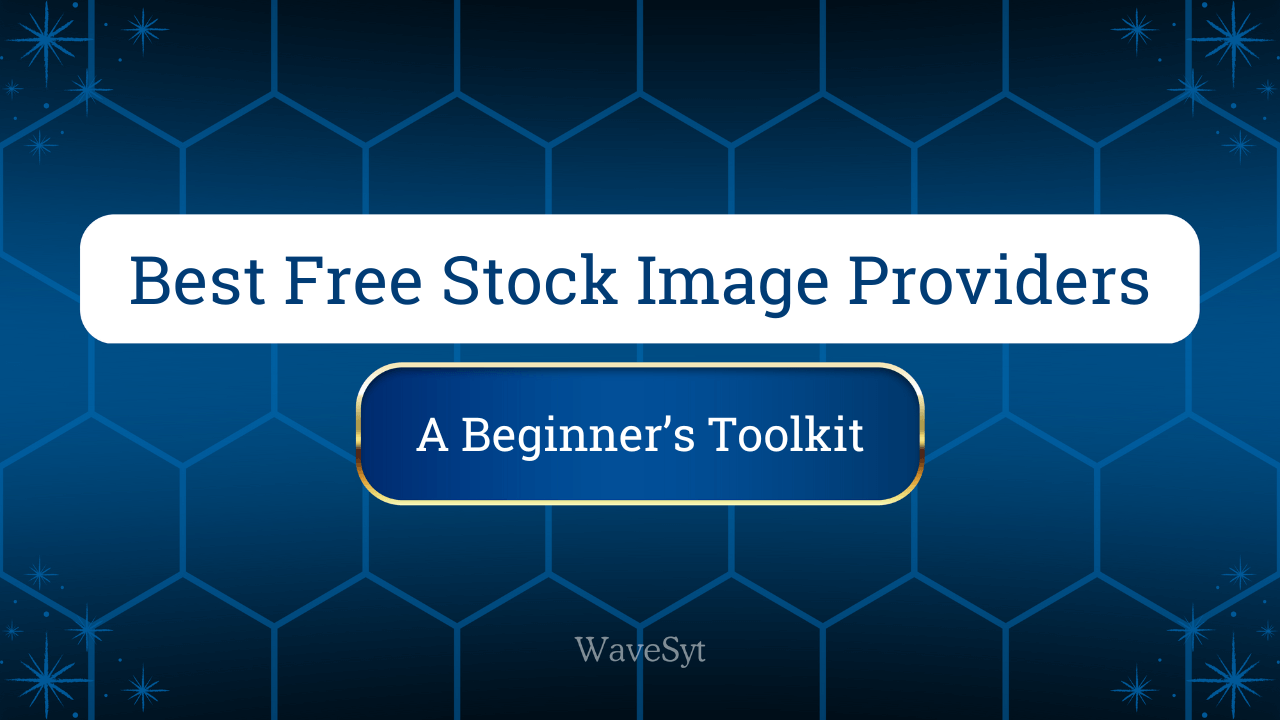Picture this: You’re crafting the perfect blog post, Instagram story, or presentation slide, and you know exactly what image would make it pop. You head to Google Images, find the perfect shot, and then… reality hits. That gorgeous photo probably costs $50 (₹4,000), or worse, using it could land you in hot legal water.
Sound familiar? If you’ve ever felt frustrated searching for quality visuals that won’t break your budget or your peace of mind, you’re not alone. Whether you’re running a small business, starting a blog, or just trying to make your social media posts look more professional, the struggle for good, free images is real.
Here’s the good news: you don’t need to spend a fortune or face problems regarding copyright licenses to get stunning visuals or stock images. The internet is packed with incredible websites offering high-quality, completely free stock images that you can use however you want. Think of it like having access to a massive art gallery where everything is free to take home.
In this guide, we’ll walk you through amazing websites that have become my go-to sources for everything from dreamy landscape shots to quirky illustrations. By the time you finish reading, you’ll have a toolkit of resources that’ll make your content look like a million bucks—without spending a dime.
Ready to discover your new favourite image hunting grounds? Let’s jump in!
Top 10 Free Stock Image Providers:
1. Unsplash: The Instagram of Stock Images
If stock photo websites were social media platforms, Unsplash would be Instagram. Everything looks effortlessly beautiful, professionally shot, and perfectly curated. With over 6 million high-resolution images, it’s become the darling of bloggers, designers, and major brands alike.
What I love about Unsplash is how it feels like browsing through a photography exhibition. Their free stock images have this aspirational quality that makes even the simplest blog post look sophisticated. The photographers here really know their craft, and it shows.
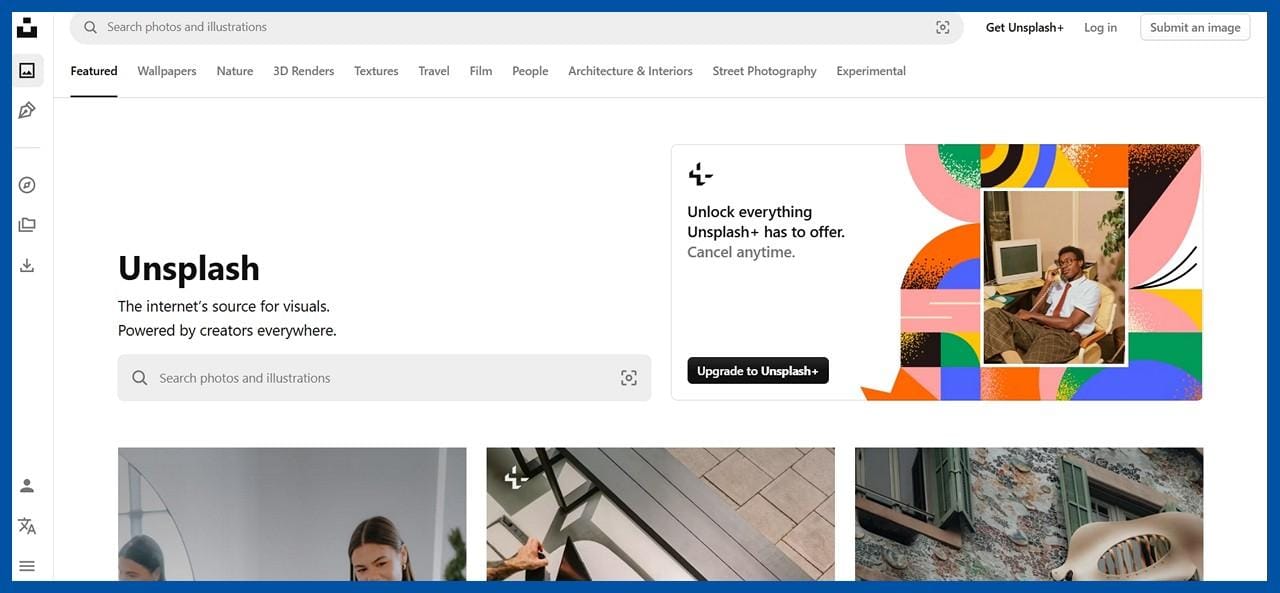
The perks that make it special: You don’t need to credit the photographer (though it’s always nice to do so). The search function works well, with helpful filters for orientation, topics, and curated collections. Plus, the interface is clean and doesn’t assault you with ads every few seconds.
What to watch out for: Because Unsplash is so popular, some images have become a bit overused, especially in the tech and business world. You might recognise a few shots from other websites or presentations. Also, if you’re looking for vectors or video content, you’ll need to look elsewhere.
Perfect for: Blog header images, social media posts, and presentations where you want that polished, professional look.
2. Pexels: Your One-Stop Shop for Stock Images
Think of Pexels as Unsplash’s more versatile cousin. Not only does it have an impressive collection of free stock images, but it also offers free stock videos—something that usually costs a small fortune elsewhere.
I particularly appreciate how Pexels focuses on authentic-looking content. The photos feel less staged and more like real moments captured naturally. It’s like the difference between a posed family portrait and a candid shot of everyone laughing at dinner.
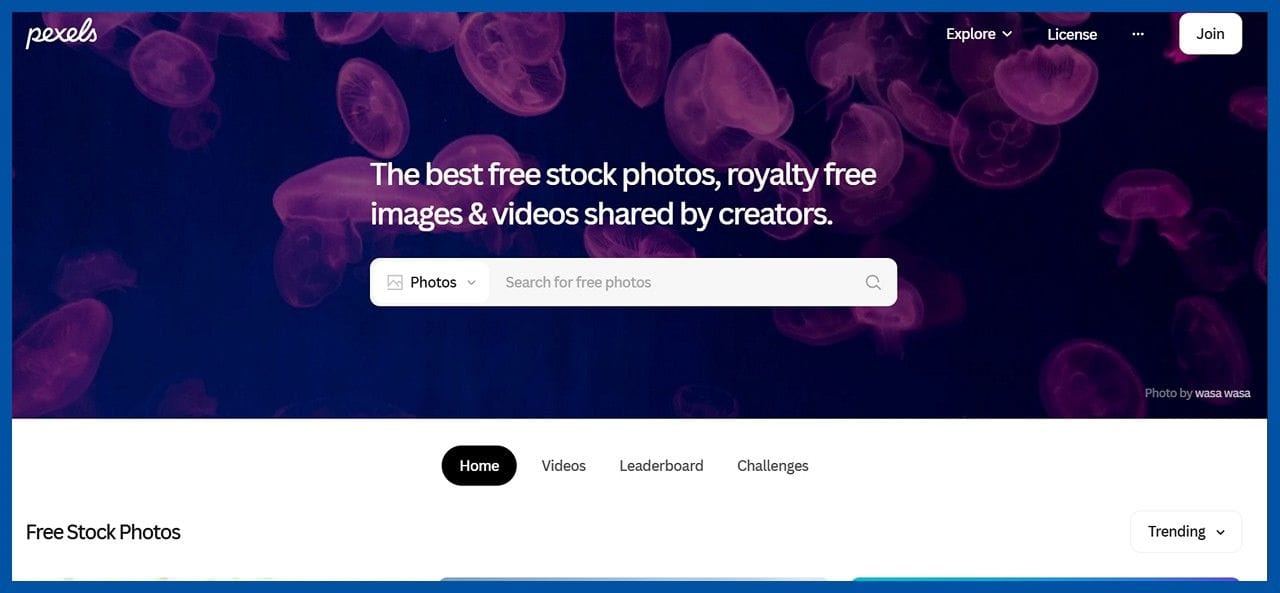
Why it’s become so popular: The quality is consistently high, and like Unsplash, you don’t need to provide attribution. The search functionality is excellent, letting you filter by colour, orientation, and size. Plus, it integrates seamlessly with design tools like Canva.
Things to keep in mind: There’s some overlap with Unsplash in terms of content, and occasionally, you’ll find photos that feel a bit too polished or staged for certain projects.
Great for: Social media content creators, YouTube thumbnails, and anyone who needs both photos and video clips in one place.
3. Pixabay: The Swiss Army Knife of Free Stock Images
Pixabay is like that friend who seems to have everything you could need. Looking for high-resolution free stock images? They’ve got it. Need a vector illustration? Covered. Want some background music for your video? They have that too.
With over 5 million assets, Pixabay operates under the CC0 license, which means you can use everything completely freely. It’s particularly helpful when you’re working on a project that needs multiple types of content and you don’t want to juggle five different websites.
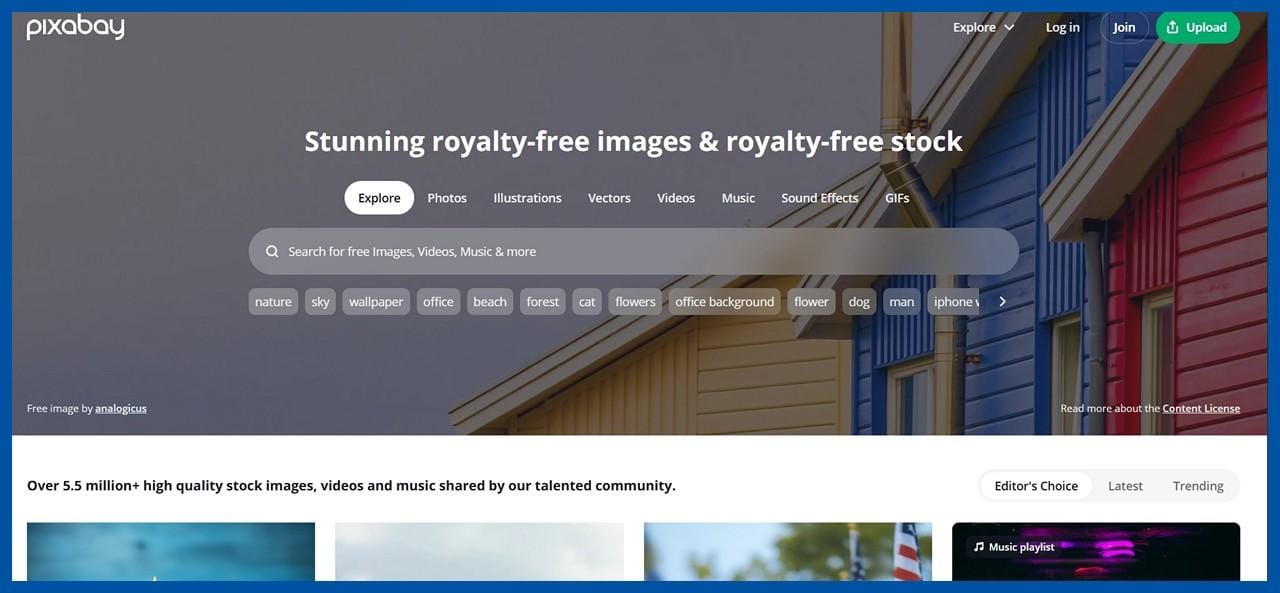
What makes it stand out: The sheer variety is impressive. Whether you need a corporate headshot, a whimsical illustration, or a 30-second video clip, chances are you’ll find something that works. The search filters are comprehensive, and they integrate with popular design tools.
The trade-offs: With such a massive collection, the quality can be inconsistent. You’ll find everything from professional-grade photos to clearly amateur shots. Also, the site does show premium content ads, which can be a bit distracting when you’re trying to focus on the free stuff.
Best used for: Complex projects that need various types of media, infographics, and when you want to do all your sourcing in one place.
4. Burst by Shopify: Made for Entrepreneurs
Burst feels like it was designed specifically for people building businesses. Created by Shopify, it’s curated with entrepreneurs and small business owners in mind. The stock images have that clean, modern aesthetic that works perfectly for websites, marketing materials, and product mockups.
What I find refreshing about Burst is how practical the photos are. Instead of artsy shots that look great but don’t serve a business purpose, you’ll find photos that help tell your brand story or showcase your products in real-world settings.
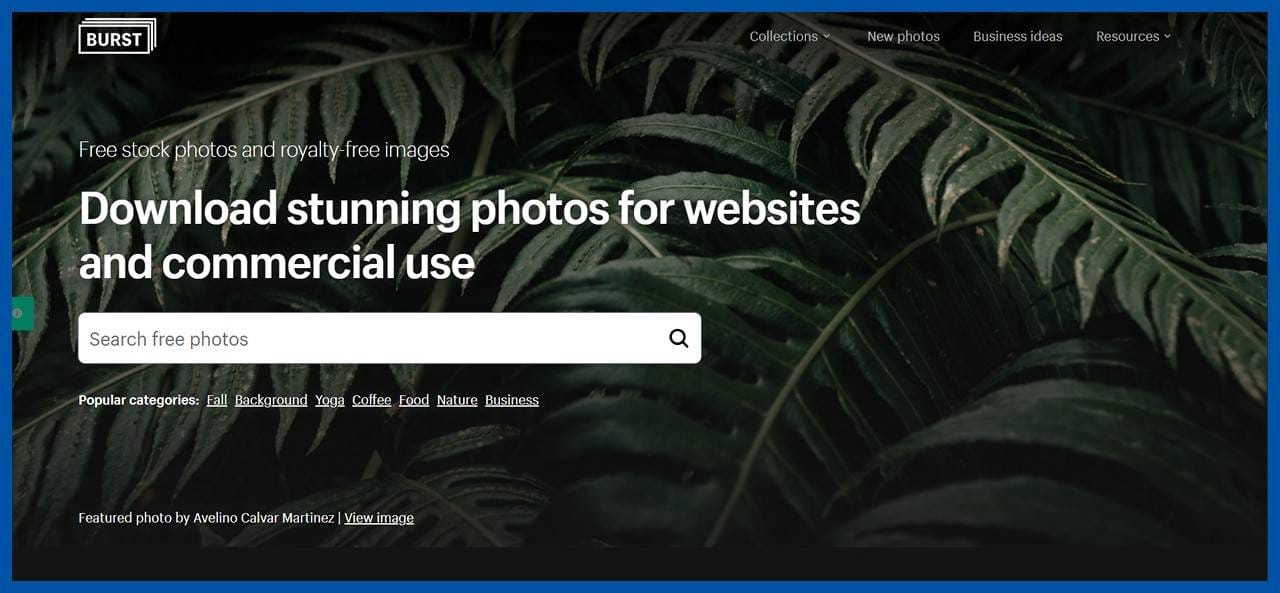
Why entrepreneurs love it: Everything is completely free for commercial use, and no attribution is required. The images are specifically chosen to work well for business applications, and the collection, while smaller than some others, is highly curated for quality.
The limitations: With around 20,000 stock images, the library is smaller than the big players. The focus on business and lifestyle themes means you might not find what you need for more creative or niche projects.
Perfect for: Shopify stores, Facebook ads, email marketing, and any business-focused content.
5. Freepik: The Designer’s Playground
If you’ve ever felt overwhelmed trying to create professional-looking graphics, Freepik might just become your new best friend. It’s like having access to a professional design studio’s entire resource library.
Freepik goes beyond just stock images. You’ll find millions of vectors, PSD files, templates, icons, and design elements that can transform even the most basic project into something that looks professionally designed.
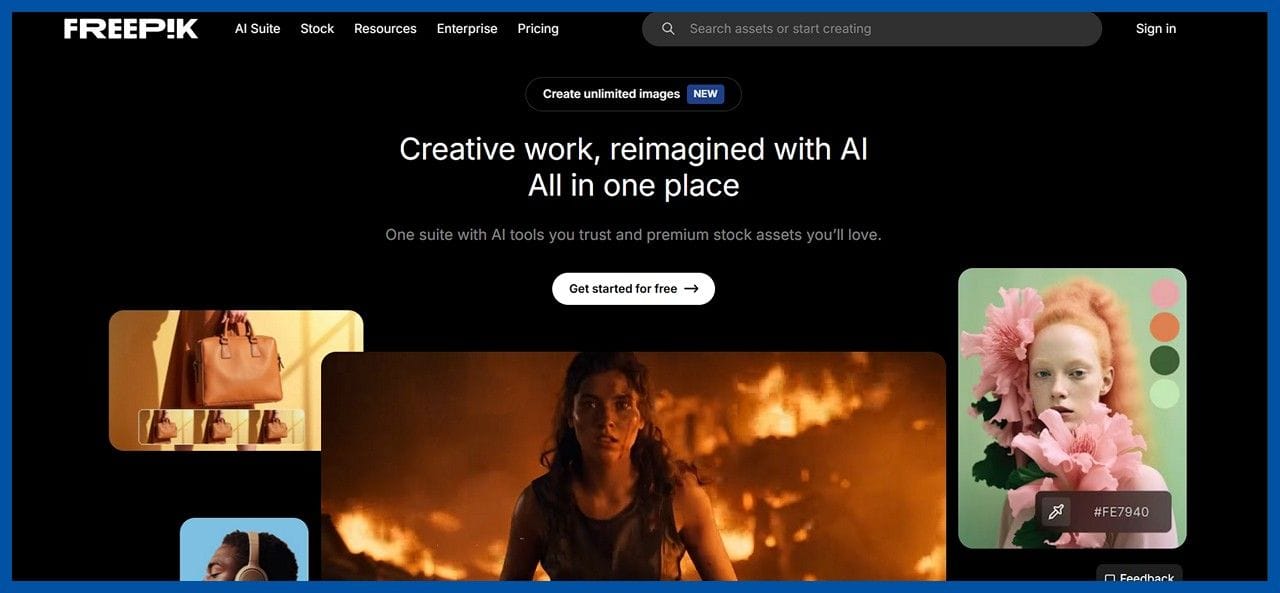
What makes it special: The variety is staggering—over 15 million assets. They’ve also added AI tools like background removers and resize tools. It’s particularly valuable if you’re creating content for social media, where eye-catching graphics can make all the difference.
The catch: On the free plan, you need to credit Freepik, and you’re limited to 10 downloads per day. For some people, this might be enough, but if you’re working on multiple projects, you might find it restrictive.
Ideal for: Social media graphics, YouTube thumbnails, presentations, and any project where you want to look like you hired a professional designer.
6. Vecteezy: Beyond Basic Stock Images
Vecteezy is where you go when you need something more than just regular stock images. It’s packed with illustrations, vector graphics, and customizable design elements that can help your content stand out from the crowd.
What sets Vecteezy apart is its focus on design-ready content. Instead of just offering stock images, it provides the building blocks for creating unique visuals. It’s like having access to a digital art supply store.
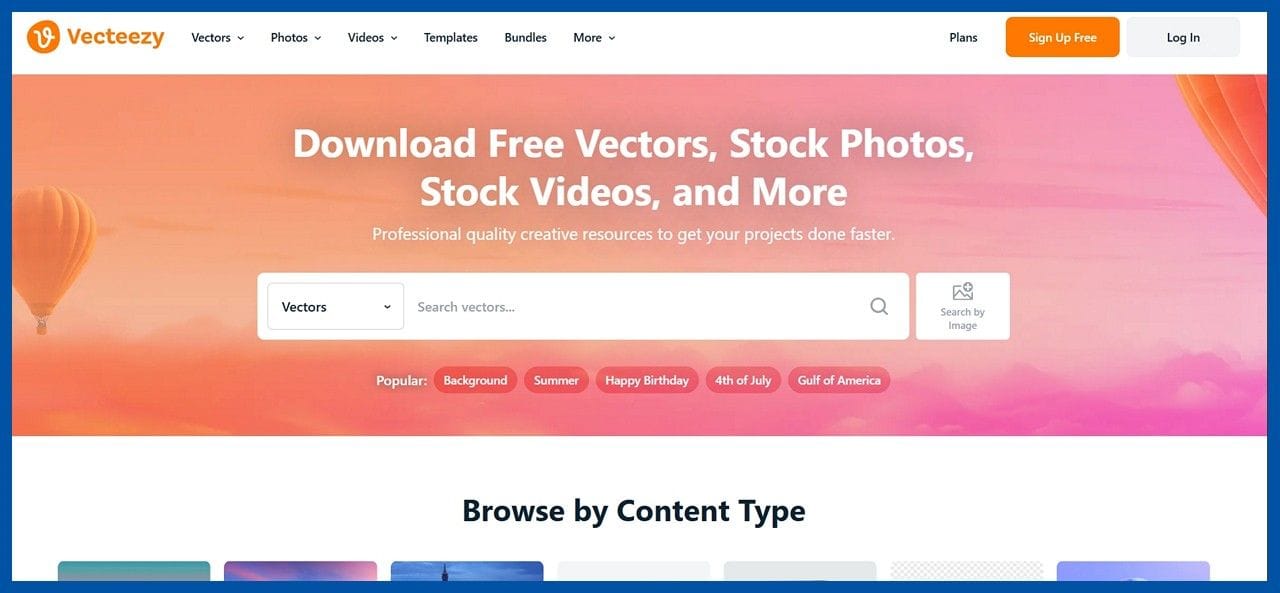
The advantages: Over 10 million assets with proper model and property releases. The filtering system is sophisticated, letting you search by content type, number of people, and even whether the content is AI-generated or not.
What to consider: Free users need to provide attribution, and the site can be slower to load than some alternatives. The sheer volume of choices can also feel overwhelming when you’re just looking for something simple.
Best for: Creating infographics, app interfaces, unique social media content, and projects where you want to customise the visuals.
7. Kaboompics: The Colour Coordinator’s Dream
Kaboompics feels like it was created by someone who genuinely cares about visual aesthetics. Founded by a single photographer, it offers a carefully curated collection of stock images that are not just beautiful, but also organised by colour palette.
The standout feature is the ability to search by colour and download the exact hex codes. It’s like having a personal colour consultant for your visual content.
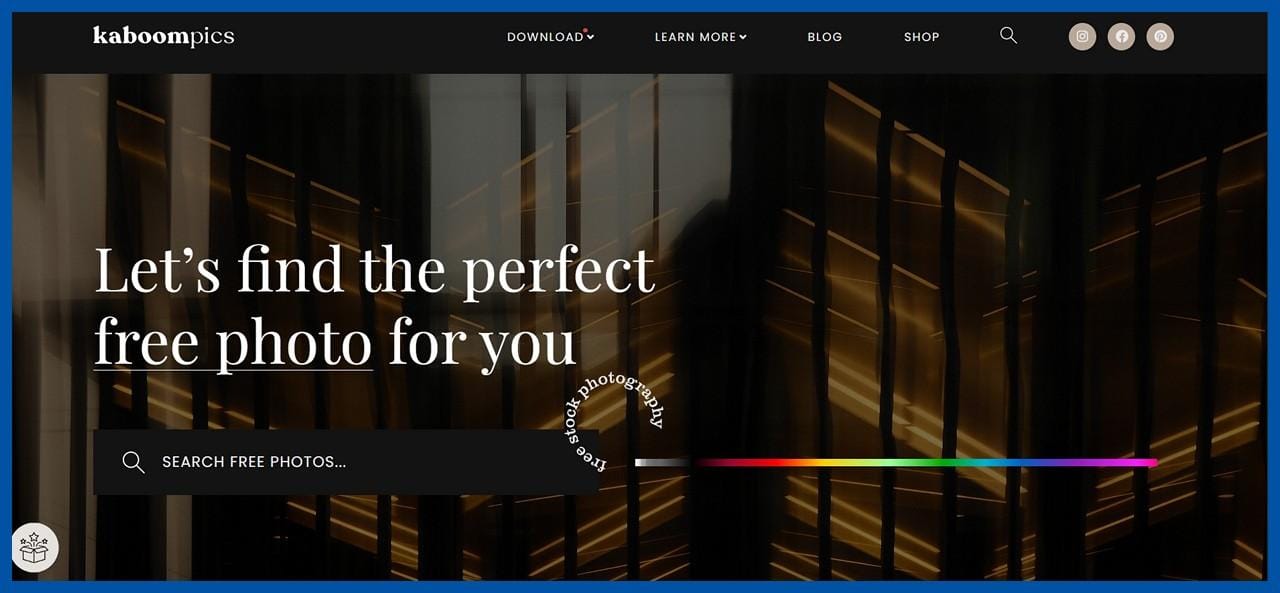
What makes it unique: The colour-based organisation is brilliant for maintaining brand consistency. The photos have a consistent, high-end aesthetic that works particularly well for lifestyle and design-focused content.
The trade-offs: The collection is smaller (around 20,000 stock images), and the focus on lifestyle and design means it might not work for all types of projects.
Perfect for: Brand mood boards, interior design content, lifestyle blogs, and projects where colour coordination is crucial.
8. Life of Pix: Artistry Meets Accessibility
Life of Pix feels like browsing through a fine art photography exhibition. Created by a Montreal-based agency, it offers breathtaking, high-resolution stock images that lean heavily toward artistic landscapes and urban scenes.
The stock images have a moody, artistic quality that can instantly elevate the visual appeal of any project. It’s particularly strong in natural and urban landscapes that tell a story.
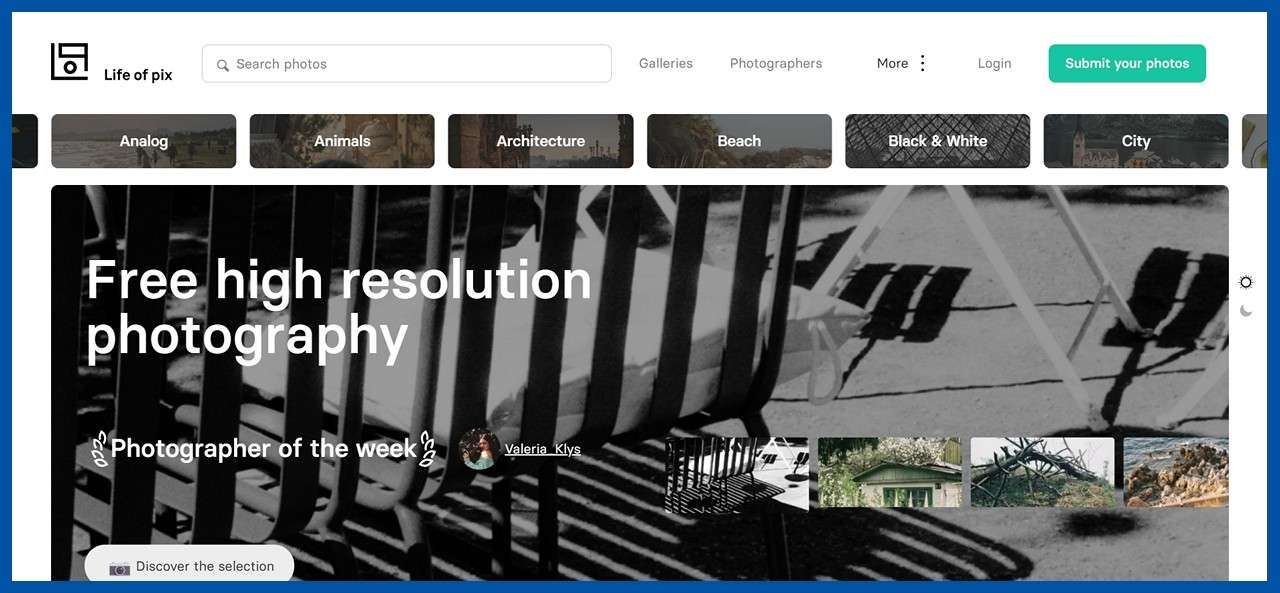
Why it’s special: Everything is completely free to use under the CC0 license. The quality is consistently high, and they add new content weekly. The images have an emotional quality that can connect with viewers.
The limitations: The collection is more focused on specific themes (nature and cityscapes), and the search functionality is minimal compared to larger sites.
Great for: Travel blogs, meditation apps, artistic projects, and content where you want to evoke emotion or atmosphere.
9. StockSnap: Trending and Timeless
StockSnap keeps things simple and effective. It’s a straightforward platform that focuses on providing high-quality stock images without the complexity of some larger sites.
What I appreciate about StockSnap is how it highlights trending and popular images, which can help you choose visuals that resonate with current tastes and preferences.
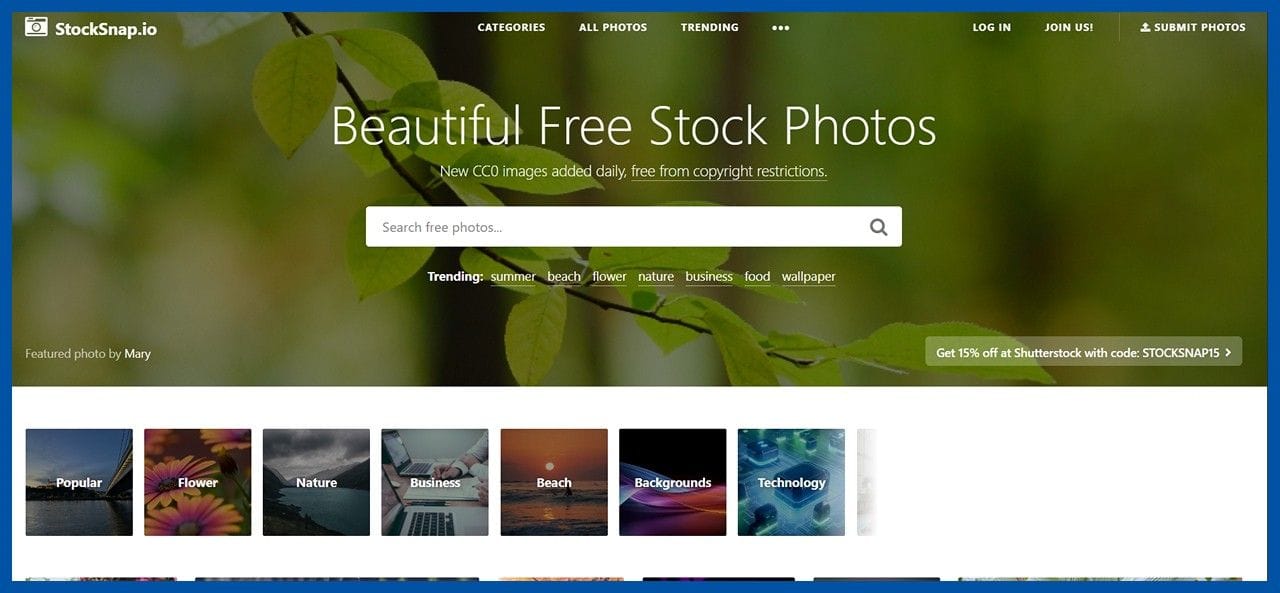
The benefits: Powerful search and tagging system. All images are CC0, so you can use them freely. The trending section helps you stay current with visual trends.
What it doesn’t offer: No videos or illustrations, and some niche topics might have limited options.
Best for: Blog thumbnails, business presentations, and general-purpose stock photography needs.
10. Gratisography: Wonderfully Weird and Refreshing
If you’re tired of the same boring stock images everyone else uses, Gratisography is your antidote. Created by photographer Ryan McGuire, this site is filled with delightfully odd and creative images that are guaranteed to make people stop and look.
Think of people in animal costumes, surreal scenarios, and colourful oddities that break the mould of traditional stock image photography. It’s like stepping into a world where creativity runs wild.
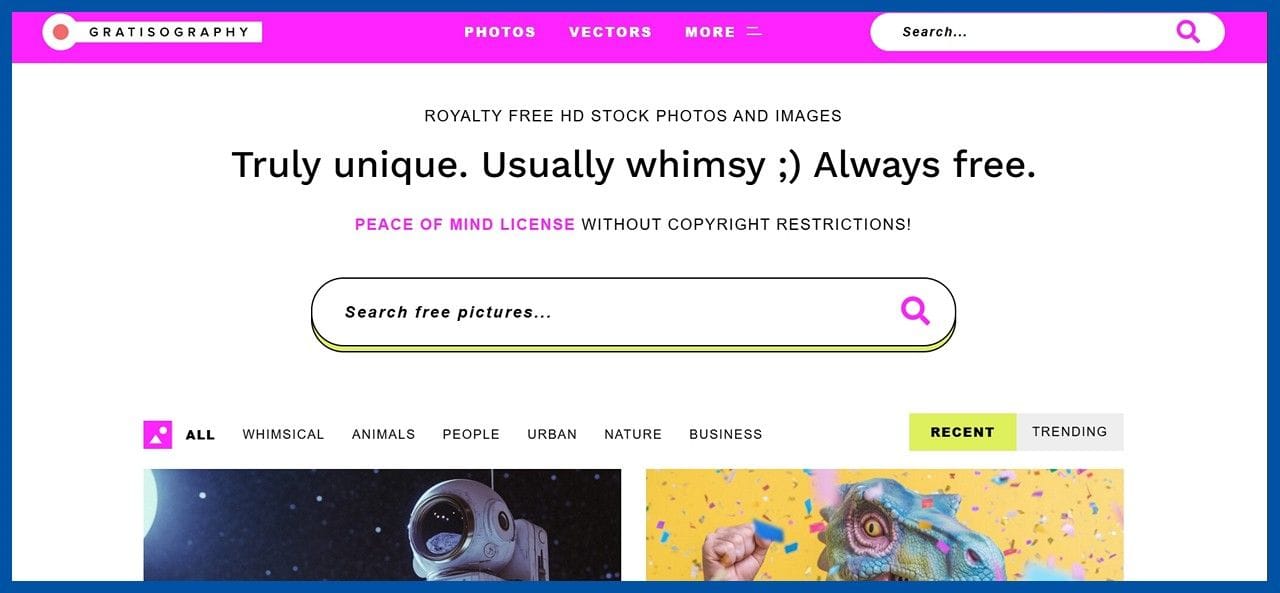
What makes it special: The images are unique—you won’t find this content anywhere else. High-resolution downloads with no attribution required. Perfect for brands that want to show personality and stand out.
The considerations: The collection is small (a few hundred images), and the aesthetic won’t work for every brand or project. It’s not for conservative or traditional applications.
Perfect for: Creative marketing campaigns, humorous content, social media posts that need to grab attention, and brands with a playful personality.
Hidden Gems Worth Exploring:
While the major sites get most of the attention, some smaller platforms offer unique content on stock images:
- Stockvault is excellent for textures and design resources that you won’t find elsewhere.
- Freerange offers a curated selection of high-quality photos and illustrations.
- FoodiesFeed is the go-to resource if you’re creating any food-related content—the images are mouth-watering.
- Jay Mantri provides minimalist nature shots perfect for creating a calm, zen-like atmosphere in your content.
These smaller sites often have less competition for downloads, meaning you’re more likely to find unique images that haven’t been used by everyone else.
Conclusion:
Finding stunning, free stock images for your content doesn’t have to be a frustrating treasure hunt anymore. With these incredible websites in your toolkit, you have access to millions of high-quality photos, vectors, and videos that can transform your content from ordinary to extraordinary, all without spending a penny or worrying about legal issues.
The key is knowing which site works best for different types of projects. Need polished, professional images? Start with Unsplash or Pexels. Looking for something with personality? Check out Gratisography. Need design elements beyond just photos? Freepik and Vecteezy have you covered.
Remember, great visual content isn’t just about finding beautiful stock images; it’s about finding the right images that support your message and connect with your audience. With these resources and the tips we’ve shared, you’re well-equipped to create content that not only looks professional but also tells your story effectively.
So go ahead, bookmark these sites, start exploring, and transform your content with stunning visuals that won’t cost you anything but time. Your audience will notice the difference, and your wallet will thank you, too!
Frequently Asked Questions:
Do I need to give credit when using free images?
It depends on the license, but many sites like Unsplash and Pexels don’t require attribution. However, crediting photographers is always a nice gesture and can help build relationships in the creative community. When in doubt, a simple “Photo by [Name] on [Website]” works perfectly.
Can I use these images to create products I’m going to sell?
Most of these sites allow commercial use, which includes creating products for sale. However, you typically can’t sell the images themselves unchanged. For example, you could use a free stock image on a t-shirt you’re selling, but you couldn’t sell the digital image file to someone else.
What’s the difference between CC0, CC BY, and site-specific licenses?
Think of CC0 as “no strings attached”—use it however you want. CC BY means “give credit where credit is due”—you can use it freely, but you need to mention the creator. Site-specific licenses are custom terms that each website creates, so you’ll need to read the fine print, though most are quite generous.
Are AI-generated images safe to use legally?
Yes, AI-generated images from these platforms are generally safe to use, as long as they’re properly marked and don’t contain recognisable faces of real people or trademarked content. The sites typically handle the legal aspects before making AI content available.
Where should I look if I need vectors and icons specifically?
Your best bets are Freepik, Vecteezy, and Reshot. These platforms specialise in scalable graphics and design elements. Pixabay also has a decent vector collection, and many of these resources come in multiple formats (SVG, PNG, etc.).
What should I do if I can’t find exactly what I’m looking for?
Try different search terms, search by colour or mood instead of specific objects, or combine images from multiple sources. You can also look for images that are close to what you want and use editing tools to adjust them. Sometimes the perfect image is just a crop or colour adjustment away.
Is it safe to use images from Flickr Commons?
Yes, but you need to be more careful about checking licenses. Use Flickr’s advanced search to filter for Creative Commons licenses, and always double-check the specific license requirements for each image. Some may require attribution or have other restrictions.

